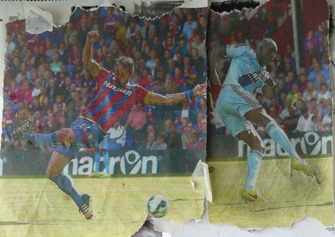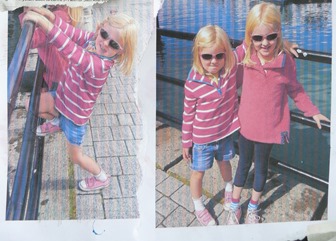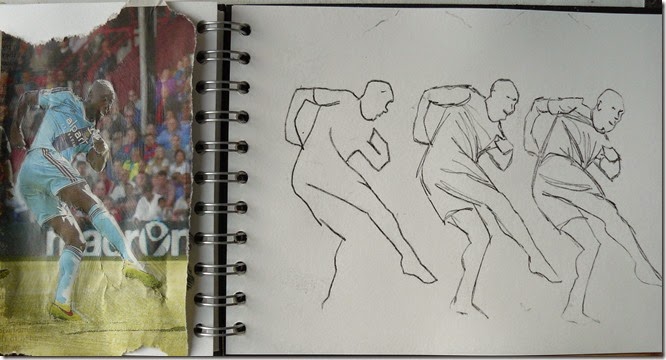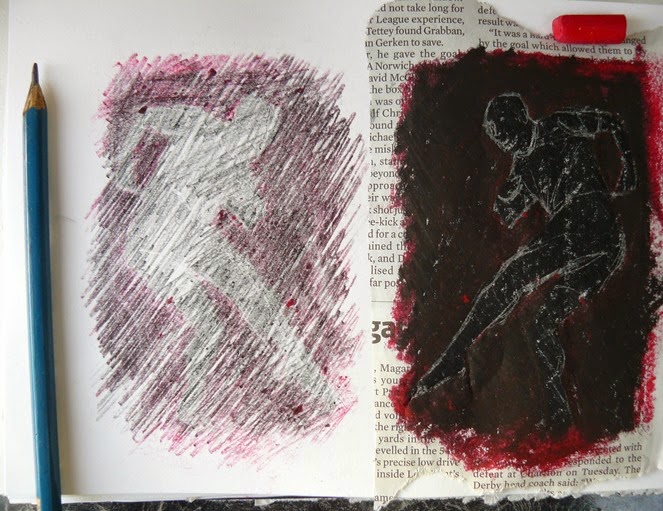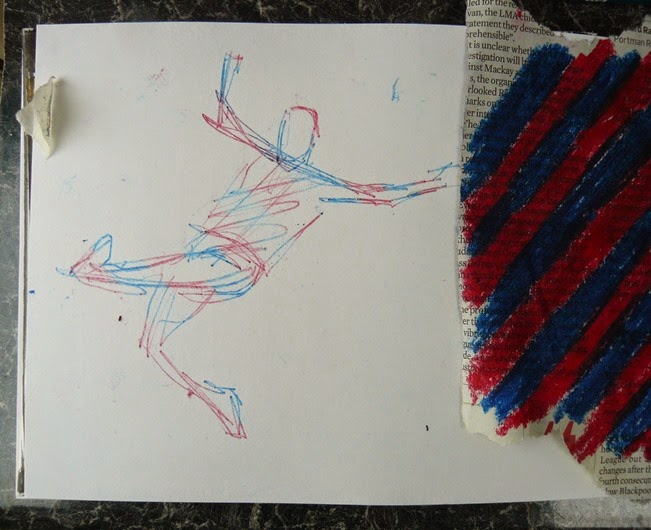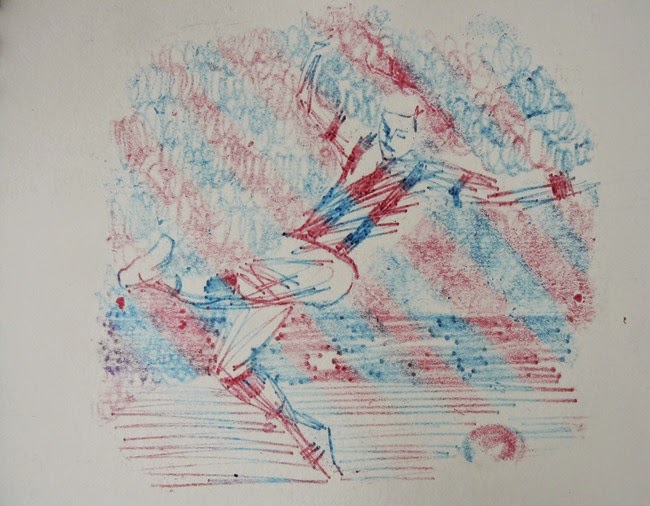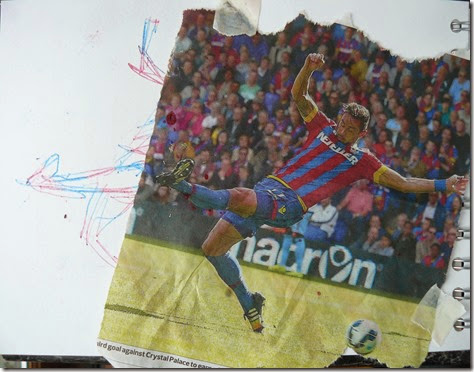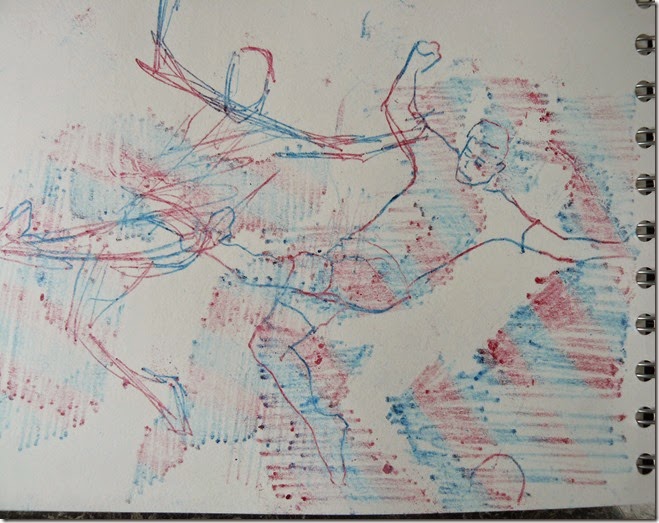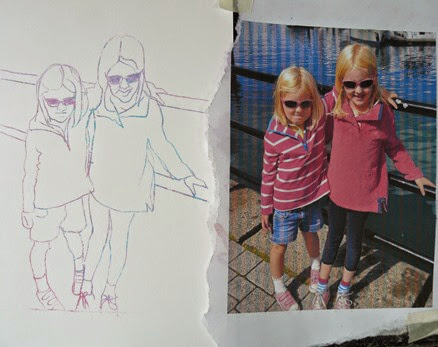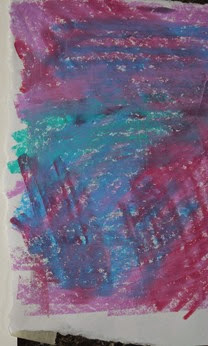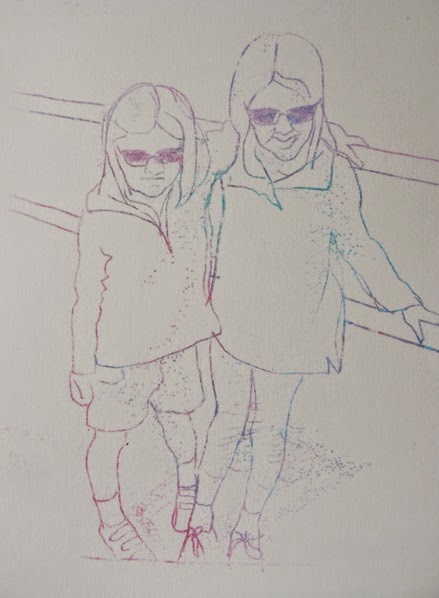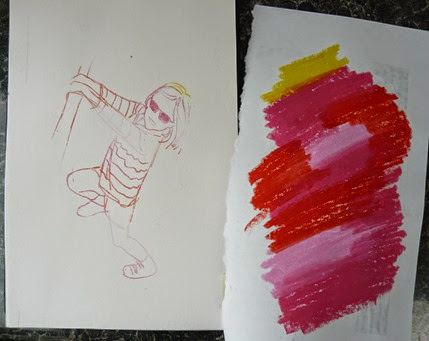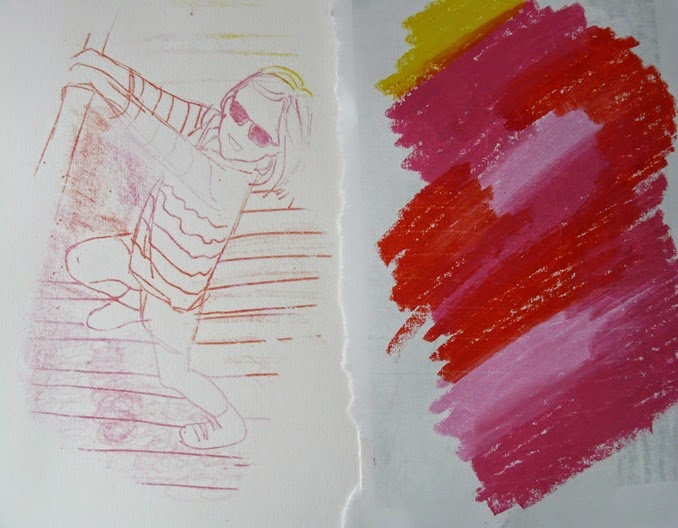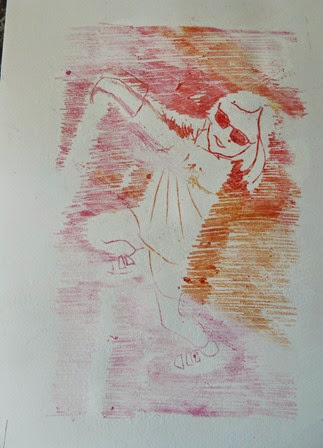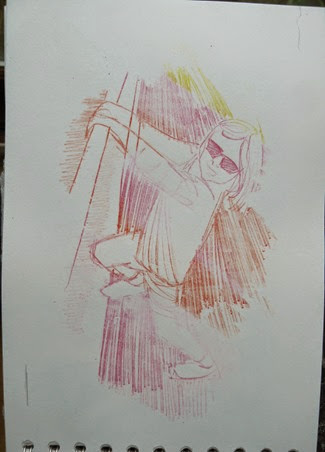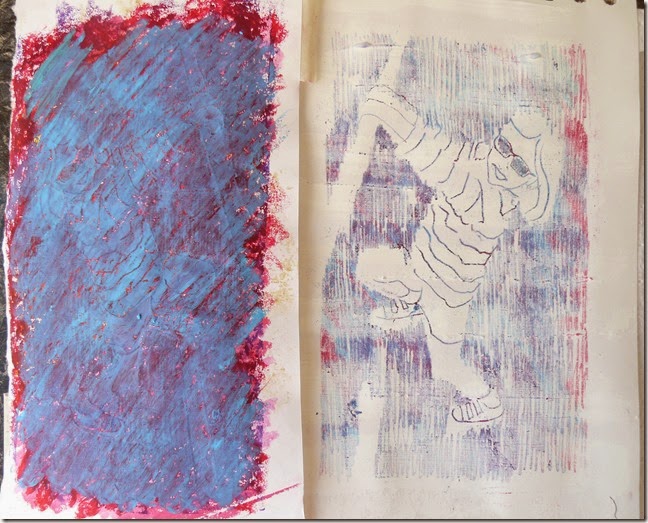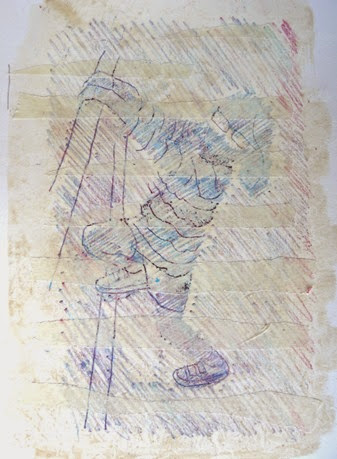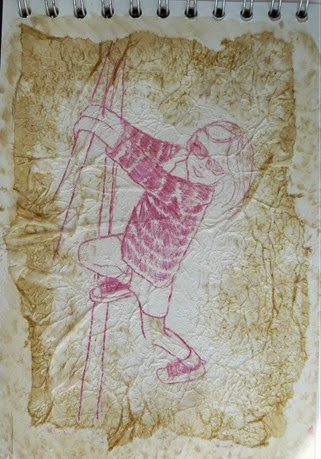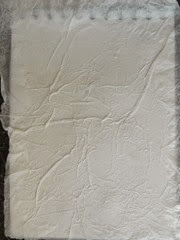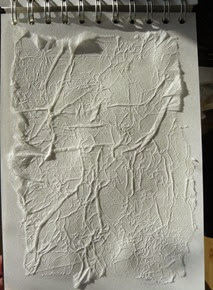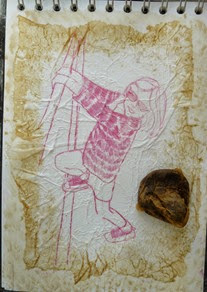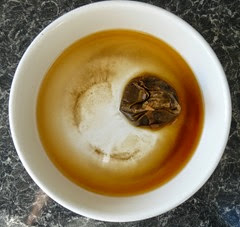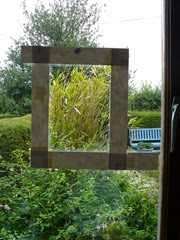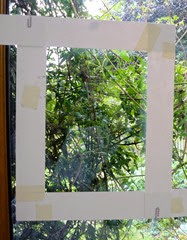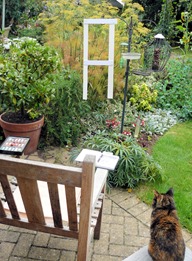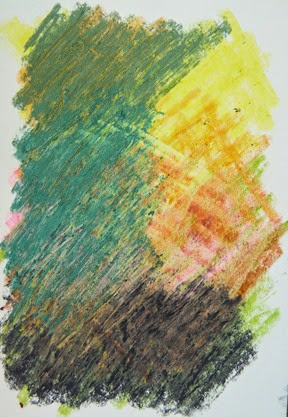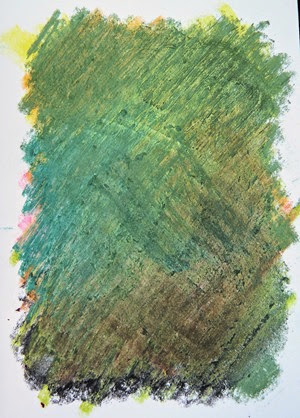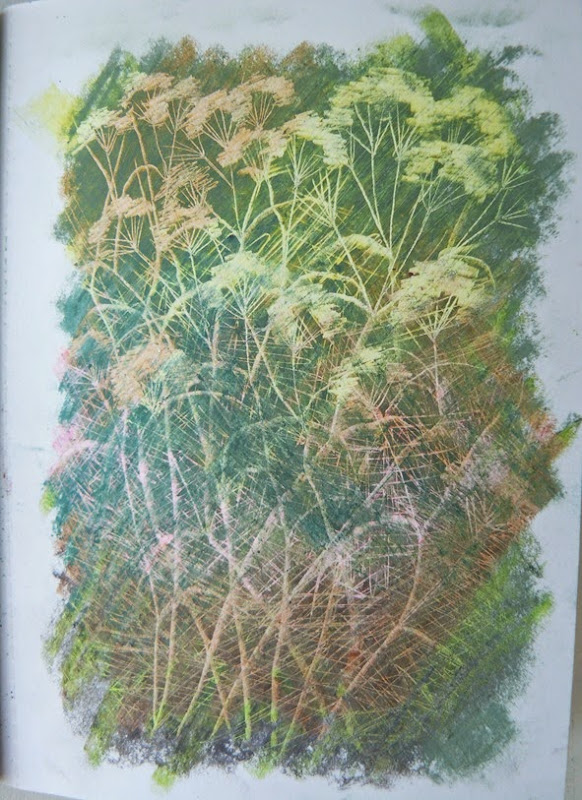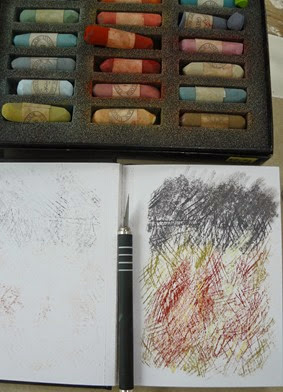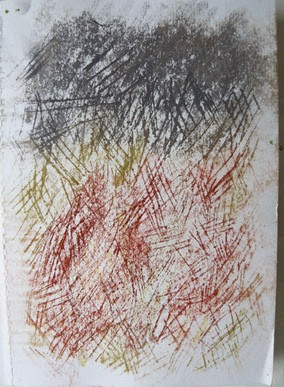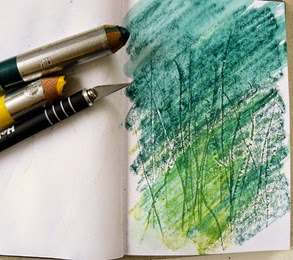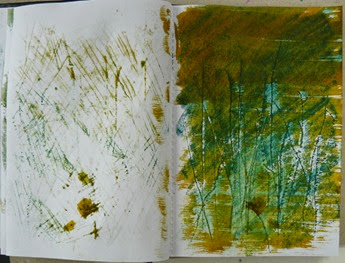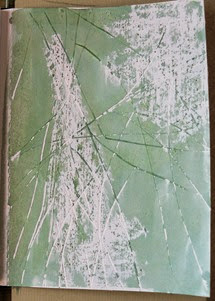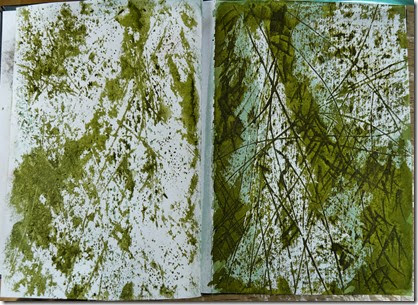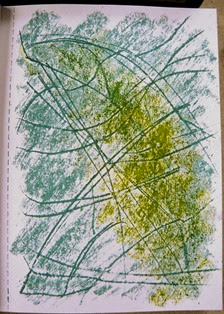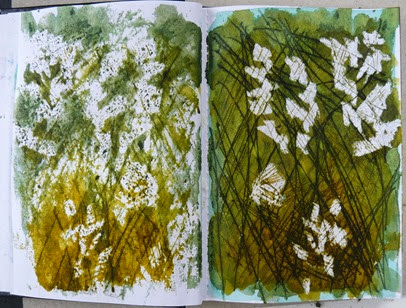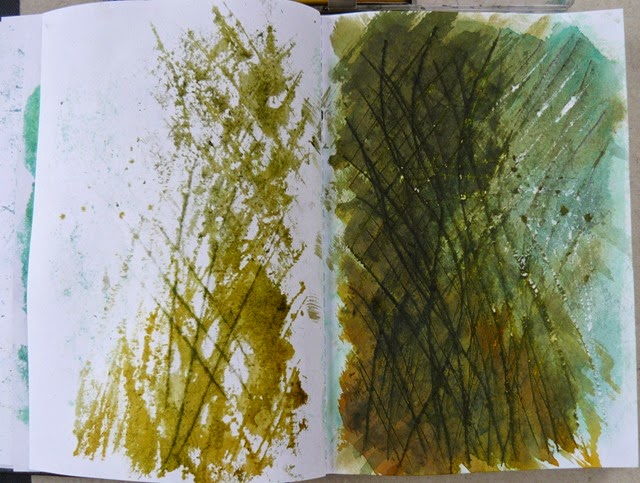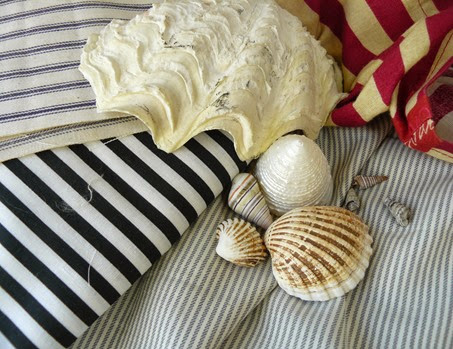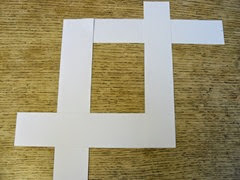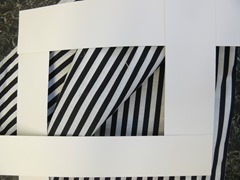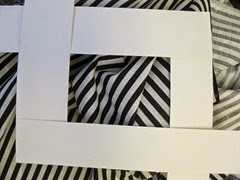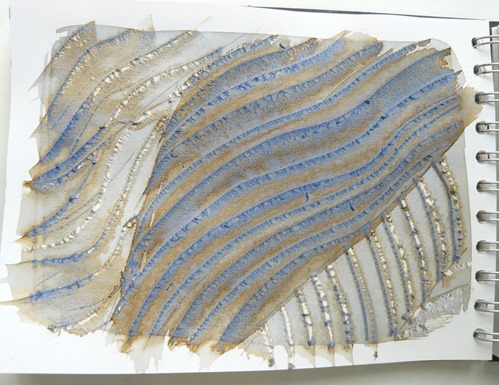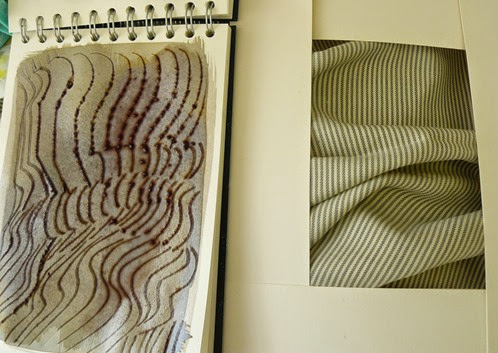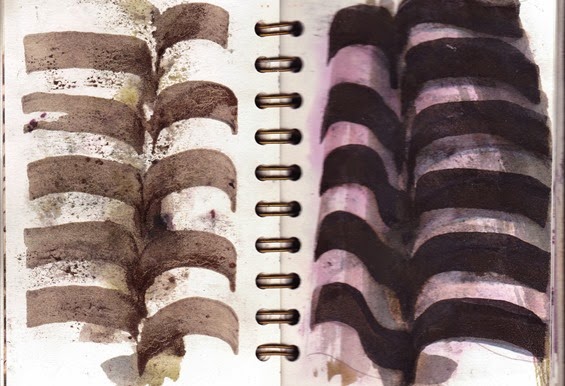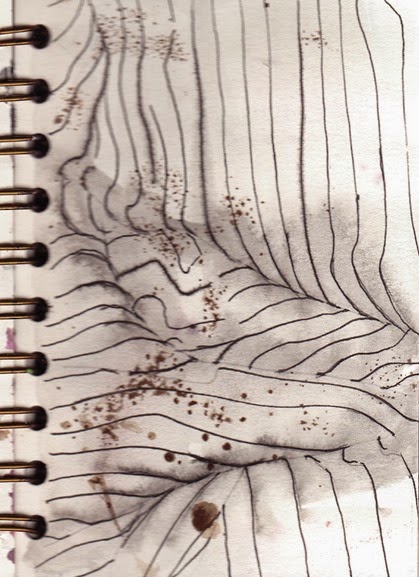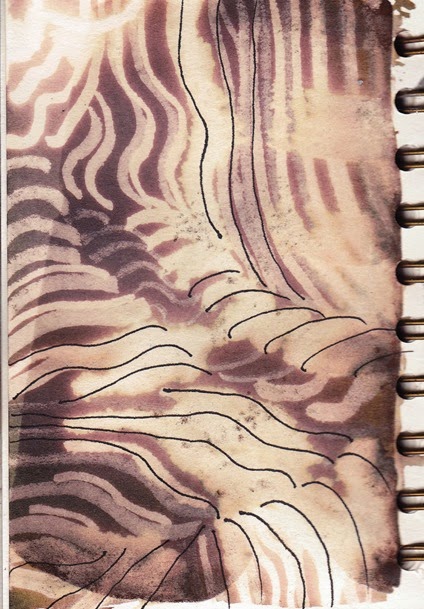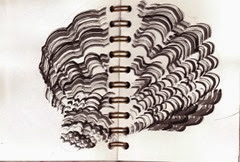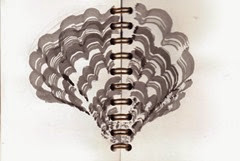Ways to figure this out!
It’s a huge challenge to draw figures so I’ve devised a simple way to get you started. It’s called ‘deluxe tracing’. But forget the tedious maps you used to trace in geography and have fun with ‘scribbled’ tracing – the deluxe way to help you make a start on drawing complicated subjects such as faces and figures.
First of all, find photographs of figures that are slightly smaller than your sketchbook page. You might find these in a newspaper, magazine, or print them out yourself from your computer. I started by using sports figures that were open silhouettes, with arms and legs showing and not ‘bundled together’.
Then I printed out some family pics of two little great-nieces (or grieces as we call them). The thin ‘everyday’ printer paper is ideal for this method so don’t use glossy, expensive paper. These poses showed plenty of space around the limbs which made drawing them much easier and gave more exciting results – with drawings full of action.
You are going to turn the backs of these images into transferrable surfaces, so a little experimentation is needed first to find out the best medium to use. Scribble solid blocks of different types of dry media onto a scrap piece of paper.
Above from the left are blocks of black pastel/chalk, oil pastel, graphite stick and a soft water-soluble pencil on the right. All worked well. A biro was used to scribble on the reverse side to transfer the scribble lines onto a plain paper below. You can see the indents made by my scribbled biro lines in the paper above and the transferred scribbled lines in the lower line of ‘trials’.
A biro was used to scribble on the reverse side to transfer the scribble lines onto a plain paper below. You can see the indents made by my scribbled biro lines in the paper above and the transferred scribbled lines in the lower line of ‘trials’.
I decided to use oil pastels for all my transferred drawings this week and a found a well-sharpened hard pencil to do the drawing.
Place your photograph onto your sketchbook page and hold it with small bits of sticky tape ( masking tape) I also found it useful to drawing little alignment markers on the page just incase you needed to re-locate the photo on top of your image. If you’re anything like me, you’ll want to peep to see how it looks and then can’t re-locate it in the right place!
The three drawings above of the football player were done by moving the photo along the sketchbook page and making another drawing. If your lines start to become feint, you can always apply more crayon on the reverse of the photo.Try different lines to make your drawing -
Try a minimal drawing, around the outline
Try drawing internal lines, particularly to suggest the way the figure is moving and stretching.
Try drawing only external lines and maybe acknowledging a background pattern or emphasising the feeling of movement. The different areas of lines below follow the direction of the edge of the body. You can see the indented lines showing on the reverse of the photo in the left image below. These were made as a result of all the transferred drawings of this figure above and below.
Instead of adding more black to the reverse of the photo to carry on doing more transferred images, I added red oil pastel to only the negatives areas around the figure – see below right. I then did another transfer drawing – this time by scribbling all over the entire reverse surface and produced the image below left.
You can have fun with making different colourful arrangements on the reverse of your photo. I chose a different footballer and put coloured stripes on the reverse to acknowledge his team stripes. It’s fun to see that the different colours appear unexpectedly. A more lively, relaxed scribbled style of drawing in this one too.
You can also experiment with different ‘points’ to transfer the media. The figure below was drawn with the point of a hard pencil as before and the background areas were made with the opposite end of the pencil and a rounded shape. These made soft transferred effects which might be useful to contrast with sharper, harder lines.
You can make a composition by overlapping your figures or even combining more than one on a page. You can tilt your photo and use just part of it if you wish. Try using different methods of drawing together in your composition. The page below is composed of the same figure and colours but some drawings are linear and some have scribbled negative spaces. It was fun to try to make a drawing appear to be of several figures and was full of movement that complemented the movement in the initial figure.
Now try with some of your own photos. Print them out onto cheap, printer paper and make sure they are the right size for your sketchbook page. I coloured the reverse of this photo of Amelie and Beatrice with pinks as, being 4 and 7, they are a very ‘pink’ pair of little girls.
Try adding little dots to suggest shadows.
I then chose a more active image of Bea, firstly drawing just the outlines and some of the simpler internal lines lines. Again, I used reds and pinks with a touch of yellow for her blond hair.
I then replaced the photo and added in more lines – this time to suggest the ground.
Two further ways of adding interest to the negative spaces around the figure. My favourite is the right one below as this suggests lots of movement which suits Bea as she never stops!
You can do quite a few transfer drawings without having to replenish the colour on the reverse. Whatever colour you add on the top layer will be the dominant one to transfer. A blue oil pastel was added to the ‘pink’ surface below.
Why not try adding some low relief to your page surface before you transfer your drawing? The right hand page below was painted with bands of gesso and the drawing was made when this was completely dried.
Ripped strips of masking tape were added to this page before the transfer drawing. It isn’t very successful as the colour doesn’t seem to show up very well on the tape. I then tried some crumpled tissue paper and this worked better. Try some ideas yourself – perhaps looking back to the previous lessons for ideas.
Stages of making the crumpled tissue surface -
Crumple a piece of white tissue paper and paint your page (not the tissue) with PVA glue.
Press tissue gently onto the glue surface but arrange with just fine creases.
Press harder so the tissue is adhered to the page surface, showing fine lines of the crease without any air pockets.
Rip excess tissue away and make sure edges are fully attached.
Make your drawing when the glue has dried.
You might like to try adding a touch of ‘sepia’ to the edges of your tissue. A tea bag does this well. Pour hot water onto a teabag and when it cools, use it to dab a tint of sepia to make a gentle border.
Next weeks lesson will be posted on Monday 7th September. Look forward to seeing you there!
